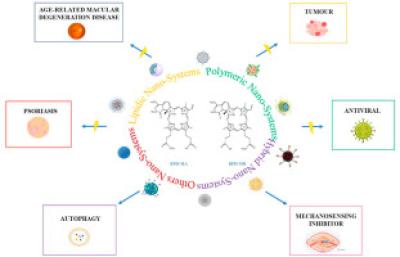Università degli Studi di Pavia - unipv.it
Nanotechnology, a booster for the multitarget drug verteporfin
In these recent years nanotechnology has gained interest as a powerful tool for drug delivery. It allows to overcome important drawbacks such as drug poor physico-chemical proprieties, toxicity and bioavailability challenges thereby ensuring better therapeutic efficacy with low side-effects and, sometimes, it permits to discover new drug applications.
This review aims to analyse the impact of nanotechnology in the pharmaceutical development of VERTEPORFIN (VP), a benzoporphyrin derivative, which was conceived as second generation photosensitizer (PS) in photodynamic therapy (PDT), and later became a milestone in ophthalmology for treating age-related macular degeneration (AMD) disease. VP photoinduced and non-photoinduced biological features will be surveyed and nanotechnology implication in improving VP performances outlined. Currently, VP loaded nanostructured delivery systems (VP-nanoSs), administered alone or in combination with other drugs, are widely studied for the treatment of many widespread diseases including several tumoral forms and severe fibrotic conditions.

